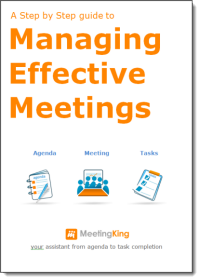
If you have two options to choose from, and you don’t know which one you prefer, toss a coin. It doesn’t matter what side the coin falls on – as soon as the coin is tossed, you’ll know what option you prefer, because that’s the side you want the coin to fall on.
In other words, even though you think that you don’t know what you want, you do. Your unconscious mind has surveyed the options, looked at the pros and cons, and made the call. It might not be the right decision to make, but it’s the decision you want to make, which is what matters at the end of the day.
The same thing goes for meetings. You might be agonizing over the decision of opening up a new website, or developing a new feature, or even hiring new people – choices that are yes or no, black or white – so you call a meeting with the rest of the team. Ultimately, it’s your decision, and of course, your responsibility, but you still want to hear from other people, hear their opinion. In effect, you want to toss a coin.
Don’t get me wrong, meetings are a fantastic tool for moving things forwards. Using meetings the right way can drive businesses like nothing else, making sure that projects are started and completed on time, that everyone is aware of their tasks and mission, that business metrics are being tracked, and help make employees understand that they are part of the company. But sometimes, meetings are used as a crutch – YOU are the one who believes that adding the ‘save default meeting template’ button is a must have feature. YOU are the one who wants to develop an Android specific version. And YOU, funnily enough, are in charge of these decisions.
Calling a meeting, just to hear people agree or disagree with you, and seeing which way the coin falls, is a waste of time. As soon as you send out the meeting invitations, you’ll know which way you want the people to fall. You know what you want the final decision to be.
So make it!


